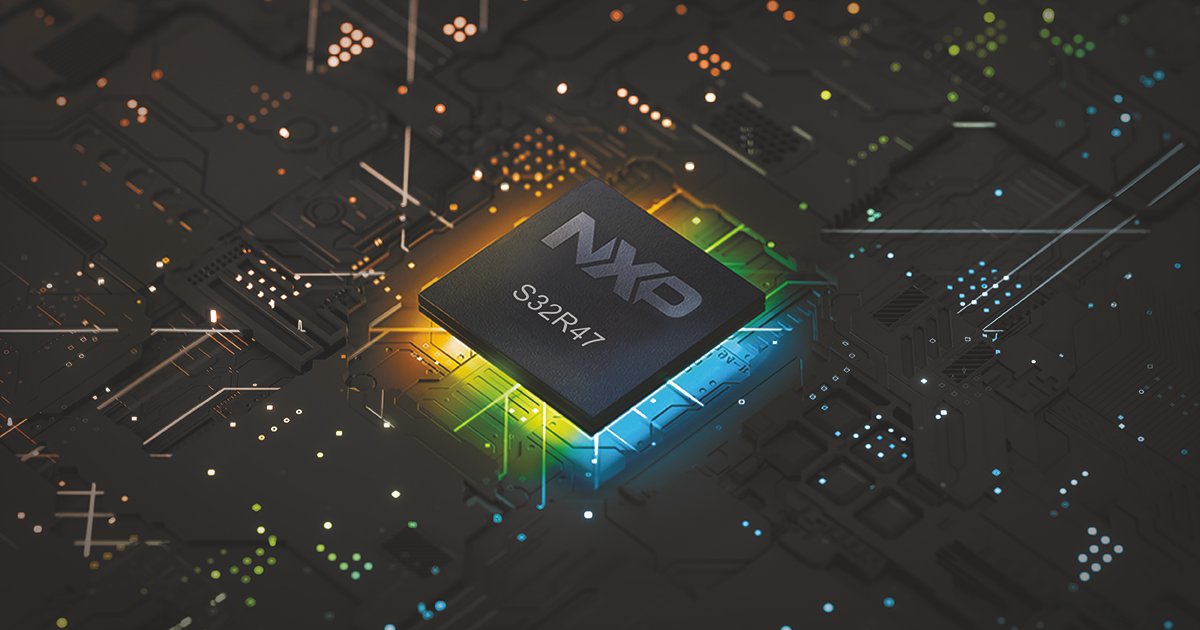News
NXP Unveils Third-Generation Imaging Radar Processors for Level 2+ to 4 Autonomous Driving

NEW DELHI: NXP Semiconductors unveiled its new S32R47 imaging radar processors in 16 nm FinFET technology, building on NXP’s proven expertise in the imaging radar space.
The third generation of imaging radar processors delivers up to twice the processing power versus the previous generation, alongside improved system cost and power efficiency.
In combination with NXP’s mmWave radar transceivers, power management and in-vehicle networking solutions, the S32R47 family meets functional safety ASIL ISO 26262 ASIL B(D) requirements and prepares the automotive industry for new levels of autonomous driving.

According to Yole Intelligence’s Status of the Radar Industry 2024 report, by 2029, approximately 40% of vehicles entering the road will be passenger cars with driving automation Level 2+(L2+)/ Level 3 (L3) as well as an increasing number of vehicles with Level 4 (L4). To serve the fast-growing autonomous driving market for SDVs, automotive OEMs and tier 1 suppliers need to improve radar performance as it is essential for safe, advanced autonomy features such as piloted driving or fully automated parking.
“The S32R47 can efficiently process three times, or more, antenna channels in real time than today’s production solutions. It enables improved imaging radar resolution, sensitivity and dynamic range – required by demanding autonomous driving use cases – while still meeting the stringent power and system cost targets set by OEMs for volume production”, said Meindert van den Beld, Senior Vice President & General Manager, Radar & ADAS.
Imaging radar leverages richer point cloud data for more detailed modeling of the environment. This is a key enabler for AI based perception systems which allow for assisted and autonomous driving in the most challenging environmental conditions, such as complex urban scenarios.
The S32R47 integrates a high-performance multi-core radar processing system, allowing denser point cloud output and enhanced algorithms that enable next- generation ADAS systems. This results in better separability of objects, improved detection reliability and more accurate classification of objects such as vulnerable road users or lost cargo.
NXP’s 3rd generation imaging radar solutions
- Built on know-how and the proven technology of two previous generations, the new solution delivers up to 2x processing performance in the radar MPU in a 38% smaller IC footprint. It also includes AI/ML support for features like enhanced Direction of Arrival (DoA) processing and object classification
- NXP’s next generation imaging radar solutions enable new imaging radars with optimized bill of material and increased scalability in terms of antenna channels and processing capability
- NXP’s solution achieves comparable or better performance with up to 89% less antenna channels than alternative solutions, solving integration challenges with reduced system cost, size and power consumption

News
Uttar Pradesh government’s GCC policy to position Noida, Lucknow, Varanasi as tech hubs

NEW DELHI: The Uttar Pradesh government on Sunday said its Global Capability Centres (GCC) Policy 2024 focusses on attracting Fortune 500 companies and boost foreign direct investments, and aims to turn cities like Noida, Lucknow, Kanpur, and Varanasi as into hubs of technology and digital services.
The policy outlines an ambitious plan to generate over 2 lakh high-paying jobs over the next five years, the state government said in a statement.
Special incentives will be offered to attract investment from top global corporations. It will not only accelerate Uttar Pradesh’s economic growth, but will also open doors to a wide array of opportunities for the state’s youth. With this initiative, the Chief Minister Yogi Adityanath-led government’s resolve to make UP a USD 1 trillion economy will also be strengthened, the statement said.
The policy lays out rules for setting up Level-1 and advanced GCCs.
For Level-1 GCCs, companies need to invest at least Rs 15 crore or employ 500 people outside Gautam Buddha Nagar and Ghaziabad. In these two districts, the minimum investment requirement is Rs 20 crore.
Advanced GCCs require an investment of Rs 50 crore (outside Gautam Buddha Nagar and Ghaziabad) or Rs 75 crore (within these districts), along with 1,000 employees. This ensures equal opportunities for both small and large investors.
The state has introduced incentives to win the confidence of investors. These include 30-50 per cent subsidy on land cost, 100 per cent stamp duty exemption, 25 per cent capital subsidy (up to Rs 10 crore for Level-1 and Rs 25 crore for Advanced GCCs), SGST reimbursement, 5 per cent interest subsidy, and 20 per cent operational subsidy (up to Rs 40 crore for Level-1 and Rs 80 crore for Advanced GCCs).
Companies can also receive payroll support of up to Rs 1.8 lakh per employee. These benefits will reduce set-up costs and encourage investment in the state, the statement said.
Besides, customised incentive packages will be offered to GCCs to be set up by Fortune 500 companies or India’s top 500 corporates, as well as those with foreign direct investment (FDI) of over Rs 100 crore. This is part of the government’s strategy to attract top global companies to Uttar Pradesh.
The policy also supports innovation and startups. It includes 50 per cent cost reimbursement for startup ideation (up to Rs 2 crore), an Intellectual Property Rights (IPR) subsidy of Rs 5-10 lakh for patents, and grants of up to Rs 10 crore for setting up centres of excellence.
These measures aim to make Uttar Pradesh a hub for technological innovation, the statement added.
Source:Press Trust of India
News
NetApp builds AI Infrastructure on NVIDIA AI Data Platform

NEW DELHI: NetApp, the intelligent data infrastructure company, has announced that it is working with NVIDIA to support the NVIDIA AI Data Platform reference design in the NetApp AIPod solution, to accelerate enterprise adoption of agentic AI.
Powered by the robust and mature data management capabilities of NetApp ONTAP, NetApp AIPod deployments built on theNVIDIAAI Data Platform will help businesses build secure, governed, and scalable AI data pipelines for retrieval-augmented generation (RAG) and inferencing, enabling organisations to harness the full potential of AI innovation.
As businesses invest in AI to solve complex business challenges, they need intelligent data infrastructure that can remove the data silos that slow technical innovation. The most recent NetApp Data Complexity report found that 79 percent of tech and business leaders agree that unifying their data estates is critical for achieving top AI outcomes in 2025.
As a NVIDIA-Certified Storage partner leveraging the NVIDIA AI Data Platform, NetApp gives NetApp AIPod users data infrastructure with built-in intelligence. NetApp gives customers confidence that they have the enterprise data management capabilities and scalable multi-tenancy needed to eliminate data siloes so that they can develop and operate high-performance AI factories and deploy agentic AI to solve real-world business problems.
News
Vi deploys Ericsson’s high-performing radio solutions for 5G rollout in Delhi NCR

NEW DELHI: Vi (Vodafone Idea), India’s leading telecom operator nnounced the launch of 5G services in Delhi NCR in partnership with Ericsson (NASDAQ: ERIC). Vi has deployed Ericsson’s high-performing Massive MIMO radios to launch its 5G service in the capital city.
The 5G launch in Delhi NCR represents a significant milestone in the 5G deployment that Ericsson is carrying out for Vi in various parts of the country.
Vi has deployed energy-efficient and lightweight Ericsson Radio System products such as mid-band Massive MIMO antenna-integrated radios AIR 3268 and AIR 3255 to ensure best-in-class network performance. With its improved spectrum efficiency, lower total cost of ownership and reduced energy footprint, Ericsson’s Massive MIMO portfolio supports Vi’s commitment to offer best-in-class performance for their customers
In October 2024, Vi had awarded Ericsson the contract to upgrade its 4G infrastructure and deploy 5G in circles that Ericsson already powers. In addition, Ericsson was asked to provide 4G and 5G services in the telecom circles of Delhi, Kerala, Chhattisgarh and Rajasthan, thereby substantially increasing its footprint and market share with Vi .
As part of this collaboration, Ericsson has successfully completed the network modernization of the Vi network in Delhi, replacing legacy 2G and 4G equipment with its energy-efficient and lightweight Ericsson Radio System products. The upgrade—seamlessly executed without network interruption—marks a significant milestone in Vi’s continued efforts to enhance network quality for its customers.
-
Uncategorized6 months ago
Hello world!
-

 News6 months ago
News6 months agoNetApp builds AI Infrastructure on NVIDIA AI Data Platform
-

 News6 months ago
News6 months agoNetApp joins hands Intel
-

 News6 months ago
News6 months agoAdCounty Media teams up with The Automobile Group
-

 News6 months ago
News6 months agoUttar Pradesh government’s GCC policy to position Noida, Lucknow, Varanasi as tech hubs
-

 AI6 months ago
AI6 months agoHikvision India launches next-gen smart entrance solutions
-

 News6 months ago
News6 months agoVi deploys Ericsson’s high-performing radio solutions for 5G rollout in Delhi NCR
-

 News6 months ago
News6 months agoAirtel launches Fraud Detection Solution